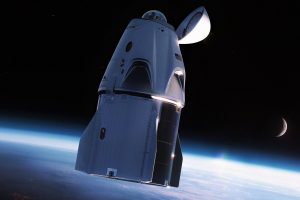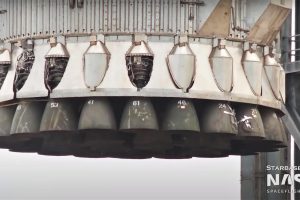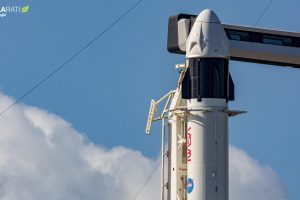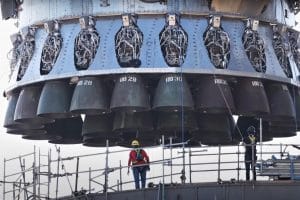For the first time in spaceflight history, a crew of all-private astronauts have rocketed into orbit – and on a SpaceX Falcon 9 rocket and Crew Dragon spacecraft.
Right on schedule, just before 8:03 pm EDT, an orbit-proven Crew Dragon spacecraft lifted off from Kennedy Space Center Pad 39A on a twice-flown Falcon 9 booster and new upper stage. Making it look easy, the booster performed flawlessly on its third spaceflight, boosting Dragon towards orbit and nailing a landing aboard drone ship Just Read The Instructions (JRTI). About 2.5 minutes after launch, Falcon 9’s upper stage took over and burned for another six minutes to precisely inject the spacecraft and its unprecedented all-private crew of Inspiration4 astronauts into an approximately 200 km (125 mi) parking orbit.
With that single feat, SpaceX has boosted the number of private citizens that have reached Earth orbit by 50% – from 8 to 12. Unlike any of the eight other private orbital spaceflights in history, though, Crew Dragon will now use its built-in Draco maneuvering thrusters to boost its orbital apogee (peak) to around 575 km (357 mi) – the highest altitude reached by private citizens in the history of spaceflight and by astronauts in general since 2009.
Assuming Dragon successfully reaches its planned apogee, Inspiration4 will mark the seventh-highest stable Earth orbit ever reached by humans and the first private (orbital) launch to fly astronauts in a flight-proven spacecraft. Heralding the array of firsts it marked, Inspiration4’s launch window also coincidentally opened just half an hour after sunset at Cape Canaveral, Florida, providing a famously spectacular view to onlookers as Falcon 9 and Dragon ascended back into sunlight for the majority of the launch.
Against the night sky present for those on the ground, the rocket’s miles-long and miles-wide exhaust plume was lit up by the long-since-set sun, producing an affectionately named ‘jellyfish’ that was visible for hundreds of miles.
Created by billionaire and mission commander Jared Isaacman, Inspiration4 could mark a turning point for genuine orbital space tourism, which has been limited to just eight private citizens in the history of spaceflight. While Dragon is far from affordable, with seats believed to cost tens of millions of dollars each, a combination of factors mean that it might be the first spacecraft in history to truly enable orbital space tourism at an unprecedented scale. Already, SpaceX has another four – and possibly five – Crew Dragon launches of four astronauts each scheduled to fly in just the next two years, more than doubling the number of private citizens that have reached orbit if all goes to plan.
Hinted at by its name, Inspiration4’s primary goal has been to inspire people around the world and to hopefully raise awareness that humanity is on the cusp of a future where spaceflight will be accessible to millions – not hundreds – of people. Inspiration4 member Haley Arceneaux is now the youngest American, first person with a prosthetic device, and first cancer survivor to reach orbit. Thanks to the mission, Dr. Sian Proctor has also become the first black woman in history to pilot a spacecraft to space or orbit.
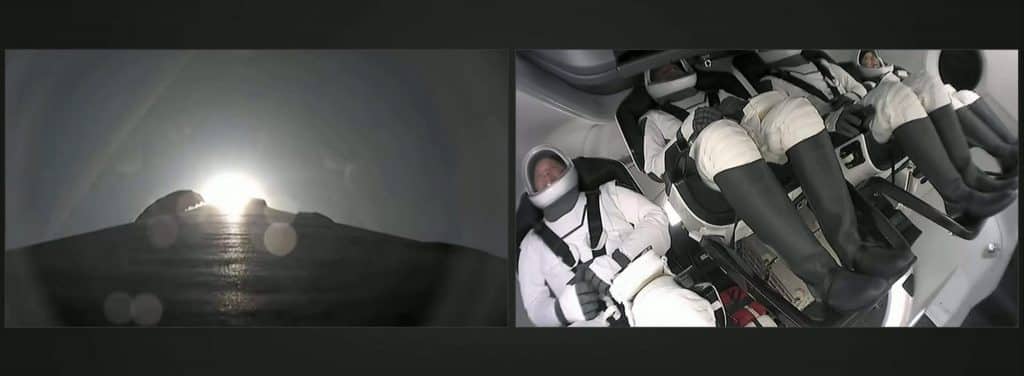

Further, on top of $100M to be donated by Isaacman himself, Inspiration4 has managed to raise almost $35M in donations for St. Jude’s Children’s Hospital – one of the foremost cancer research and treatment hospitals in the US and the world.
Last but not least, the mission will also debut the largest spacecraft window ever flown in space or orbit – a modification to Crew Dragon called a cupola that SpaceX has now designed, built, qualified, and launched in less than a year.


